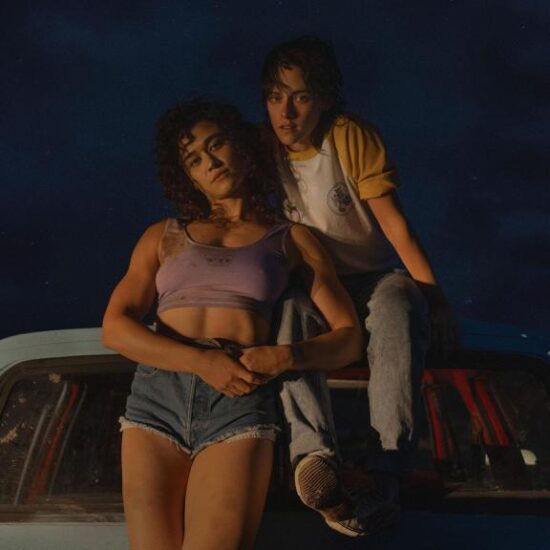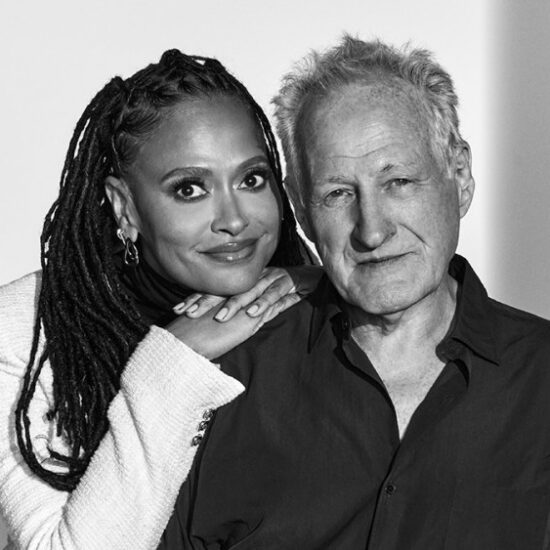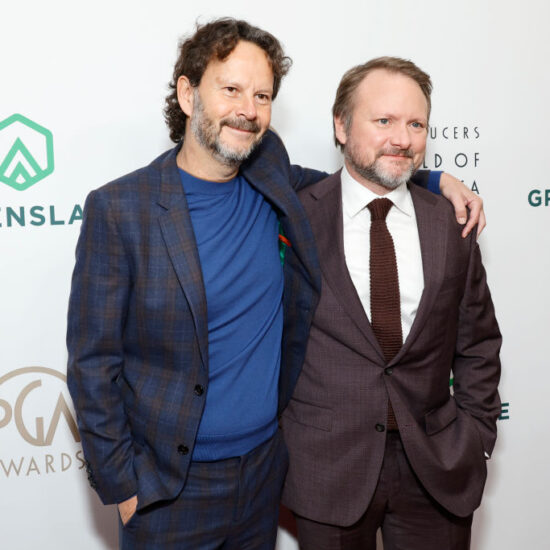
For co-director Kemp Powers, there were “a lot of MVPs” in the making of Spider-Man: Across the Spider-Verse. But if he were to pare down a list of “the MVPs of all the MVPs,” among them would be editor Mike Andrews.
After all, he says, Across the Spider-Verse might as well be titled Troubleshooting on the Fly, and given Andrews’ command of timing, tone and much more, no one was much more integral to the process of getting each story beat and reel across the finish line.
In conversation with Powers on The Process, Andrews recalls a wrap party chat with co-writer-producer Chris Miller, in which he was asked if the Sony Animation sequel was the most challenging film he’s ever tackled. Only Paramount/DreamWorks’ Megamind was harder, he replied, given time constraints that forced him to work with “walking pneumonia.” But Spider-Verse was certainly a “monster” of a project, given its volume of characters, sets and design work, and the amount of cooks in the kitchen behind the scenes.
RELATED: ‘Spider-Man: Across The Spider-Verse’ Sets Netflix Premiere Date
“There was a lot going on at once, and that was definitely more widespread than I’m used to on movies,” Andrews explains. “I’m used to having it a little more funneled down to my room and a closer-knit group working on everything.” On this production, he says, he felt like “one of those old Johnny Carson guys, running around spinning plates.”
It was given these same factors, Powers says, that Across the Spider-Verse was “one of the most unique filmmaking experiences” of his career.
Co-directed with Joaquim Dos Santos and Justin K. Thompson, the film is the first of two sequels to the 2018 Best Animated Feature Oscar winner Spider-Man: Into the Spider-Verse, starring Shameik Moore and Hailee Steinfeld as Brooklyn’s friendly neighborhood Spider-Man, Miles Morales, and his love interest Gwen Stacy, respectively. Scripted by Phil Lord & Christopher Miller and David Callaham, the film picks up with the duo encountering a team of Spider-People charged with protecting the very existence of the multiverse, only for Morales to be catapulted through it. When the heroes clash on how to handle a new threat, Miles finds himself pitted against the other Spiders and must redefine what it means to be a hero so he can save the people he loves most.
Best known for his Oscar-nominated screenplay adaptation of his own play, One Night in Miami…, Powers entered the Spider-Verse after making his directorial debut opposite Pete Docter on Pixar’s Oscar winner Soul, which he also co-wrote. For Andrews, who spent 20 years at DreamWorks, equally challenging to his work on any particular project is the task of explaining what exactly he does.
“People [often] go, ‘What, do you just cut shots together that are already animated? I don’t get it,’” shares Andrews, who relays that the process of editorial in animation is actually much more multifaceted. Whereas editors working in live-action generally board a project in post, animation editors are aboard “from the get-go” for pre-production and production, as well. “Post-production is actually the most minor aspect of our job because it’s only the last couple months as we’re putting the film together,” he says. “Pre-production is the most important aspect of our job because that’s all the story phase, and we’re building the movie from scratch.”
Rather than cutting together completed animated shots, Powers explains, an editor like Andrews starts out by stitching together 2D storyboards and accompanying scratch voice performances. “We’re making versions of the film in 2D storyboard,” says the filmmaker, “and as things are working their way through production, they are dynamically dropping into the edit suite.”
What this often means for a director is that when a new iteration of a shot or sequence comes in, it’s immediately apparent that the overall picture is no longer gelling. “Conceptually, it worked in 2D storyboards,” he explains, “and then we see it in a rough 3D version and go ‘Oh, well, that’s different.’”
Editing a film like Across the Spider-Verse thus requires an extraordinary attention to detail all the way through. Andrews considers himself “lucky” that in the case of this film, he was given more latitude than usual to keep coming back to story as his North Star, workshopping scenes until they actually worked. “Even through production, we could change more things than you normally would,” he says. “Most studios try to lock you down, but I think [writer-producers] Phil [Lord] and Chris [Miller] have a little more power, and that’s how they like to work, and then we have to all kind of roll with that.”
In between countless test screenings of Spider-Verse, Andrews continued to play with elements like sound and music until the film as a whole felt like “a full, rich experience.”
Interestingly, while he was admittedly “blown away” by Into the Spider-Verse and came to the project with a great admiration of the original, it was actually a different set of films from Lord and Miller that sold him on taking the sequel. Those were the Jump Street comedies, starring Channing Tatum and Jonah Hill, which he viewed for the first time while mulling his opportunity with Spider-Verse. After watching those titles, Andrews says, he “got such a great vibe from the Lord Miller experience. I was like, ‘There’s something about these guys’ movies that are different. There’s something very unique.’”
Now the highest-grossing film in the history of Sony Animation, Across the Spider-Verse was produced by Avi Arad, Amy Pascal, Lord, Miller, and Christina Steinberg. Bob Persichetti, Peter Ramsey, Rodney Rothman, Aditya Sood, Rebecca Karch, and Brian Bendis served as EPs. While threequel Spider-Man: Beyond the Spider-Verse was originally dated to hit theaters March 29, 2024, the title was temporarily pulled from the schedule given the inability to complete voiceover work amidst the SAG-AFTRA strike, and has not yet set a new date.
In addition to his path into animation editing, Andrews speaks on The Process to the Spidey scene in which he was “the most entrenched from day one,” why “heart’s the most crucial” element to understand for anyone cutting animation, a nerve-wracking data loss experience that resulted in his having to rebuild an entire scene, times throughout his career that he’s felt like “a ghost co-director,” DreamWorks-Pixar competition, and more.
View the full conversation above.













